Related Research Articles
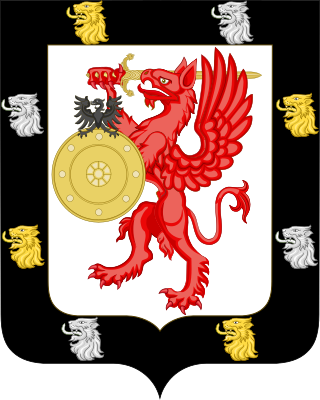
The House of Romanov was the reigning imperial house of Russia from 1613 to 1917. They achieved prominence after Anastasia Romanovna married Ivan the Terrible, the first crowned tsar of all Russia. Nicholas II, the last Emperor of Russia, and his immediate family were executed in 1918, but there are still living descendants of other members of the imperial house.

Boris Godunov is an opera by Modest Mussorgsky (1839–1881). The work was composed between 1868 and 1873 in Saint Petersburg, Russia. It is Mussorgsky's only completed opera and is considered his masterpiece. Its subjects are the Russian ruler Boris Godunov, who reigned as Tsar during the Time of Troubles, and his nemesis, the False Dmitriy. The Russian-language libretto was written by the composer, and is based on the 1825 drama Boris Godunov by Aleksandr Pushkin, and, in the Revised Version of 1872, on Nikolay Karamzin's History of the Russian State.

Boris Feodorovich Godunov was the de facto regent of Russia from 1585 to 1598 and then tsar from 1598 to 1605 following the death of Feodor I, the last of the Rurik dynasty. After the end of his reign, Russia descended into the Time of Troubles.
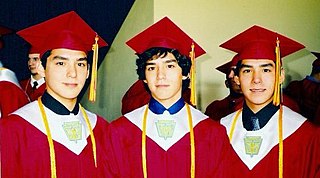
A multiple birth is the culmination of one multiple pregnancy, wherein the mother gives birth to two or more babies. A term most applicable to vertebrate species, multiple births occur in most kinds of mammals, with varying frequencies. Such births are often named according to the number of offspring, as in twins and triplets. In non-humans, the whole group may also be referred to as a litter, and multiple births may be more common than single births. Multiple births in humans are the exception and can be exceptionally rare in the largest mammals.

Conjoined twins, popularly referred to as Siamese twins, are twins joined in utero. It is a very rare phenomenon, estimated to occur in anywhere between one in 50,000 births to one in 200,000 births, with a somewhat higher incidence in southwest Asia and Africa. Approximately half are stillborn, and an additional one-third die within 24 hours. Most live births are female, with a ratio of 3:1.

Pregnancy over the age of 50 has become possible for more women because of advances in assisted reproductive technology, in particular egg donation. Typically, a woman's fecundity ends with menopause, which, by definition, is 12 consecutive months without any menstrual flow at all. During perimenopause, the menstrual cycle and the periods become irregular and eventually stop altogether. The female biological clock can vary greatly from woman to woman. A woman's individual level of fertility can be tested through a variety of methods.
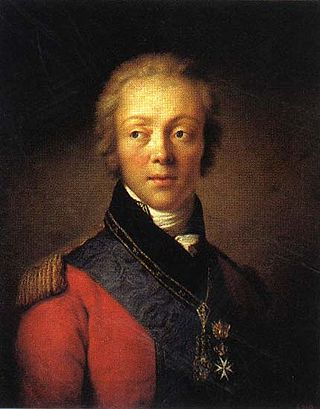
Count Fyodor Vasilyevich Rostopchin was a Russian statesman and General of the Infantry who served as the Governor-General of Moscow during the French invasion of Russia. He was disgraced shortly after the Congress of Vienna, to which he had accompanied Tsar Alexander I. He appears as a character in Leo Tolstoy's 1869 novel War and Peace, in which he is presented very unfavorably.
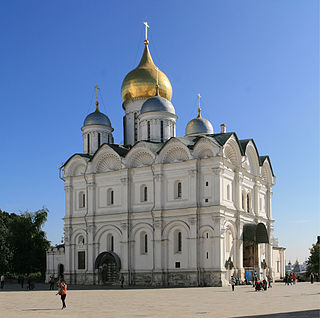
The Cathedral of the Archangel is a Russian Orthodox church dedicated to the Archangel Michael. It is located in Cathedral Square of the Moscow Kremlin in Russia between the Great Kremlin Palace and the Ivan the Great Bell Tower. It was the main necropolis of the tsars of Russia until the relocation of the capital to St. Petersburg.

Alexander Tikhonovich Gretchaninov was a Russian Romantic composer.

Viktor Mikhaylovich Vasnetsov was a Russian artist who specialised in mythological and historical subjects. He is considered a co-founder of Russian folklorist and romantic nationalistic painting, and a key figure in the Russian Revivalist movement.
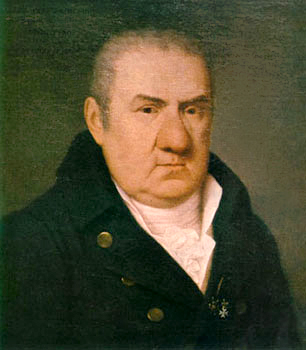
Giacomo Quarenghi was an Italian architect who was the foremost and most prolific practitioner of neoclassical architecture in Imperial Russia, particularly in Saint Petersburg. He brought into vogue an original monumental style, of Palladian inspiration, which was a reference for many architects who worked in Russia as well as the Grand Duchy of Finland.
Thomson Medical Centre Limited is a 190-bed private hospital located at Thomson Road in Singapore. The hospital specialises in gynaecology and in vitro fertilisation (IVF). Thomson Medical Centre runs a 24-hour outpatient family clinic, as well as a range of specialist clinics.
Russian opera is the art of opera in Russia. Operas by composers of Russian origin, written or staged outside of Russia, also belong to this category, as well as the operas of foreign composers written or intended for the Russian scene. These are not only Russian-language operas. There are examples of Russian operas written in French, English, Italian, Latin, Ancient Greek, Japanese, or the multitude of languages of the nationalities that were part of the Empire and the Soviet Union.
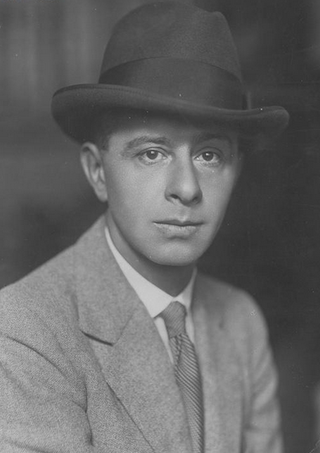
Feodor Stepanovich Rojankovsky, also known as Rojan, was a Russian émigré illustrator. He is well known both for children's book illustration and for erotic art. He won the 1956 Caldecott Medal for U.S. picture book illustration from the American Library Association, recognizing Frog Went A-Courtin' by John Langstaff.

Nancy L. Segal is an American evolutionary psychologist and behavioral geneticist, specializing in the study of twins. She is the professor of developmental psychology and director of the Twin Studies Center, at California State University, Fullerton. Segal was a recipient of the 2005 James Shields Award for Lifetime Contributions to Twin Research from the Behavior Genetics Association and International Society for Twin Studies.

Duchess Augusta Caroline Friederika Luise of Brunswick-Wolfenbüttel, was the first wife of Frederick of Württemberg and the mother of William I of Württemberg.

The Chesme Church, is a small Russian Orthodox church at 12 Lensoveta Street, in Saint Petersburg, Russia. It was built by the Russian court architect Yury Felten in 1780, at the direction of Catherine the Great, Empress of Russia. A memorial church, it was erected adjacent to the Chesme Palace between Saint Petersburg and Tsarskoye Selo to commemorate the anniversary of Russia's 1770 victory over Turkish forces in Chesme Bay in the Aegean Sea during the Russo-Turkish War of 1768–1774.
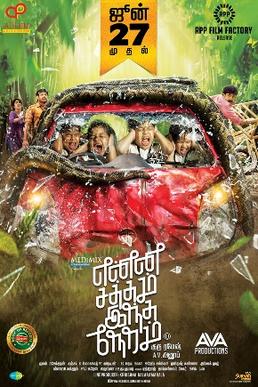
Enna Satham Indha Neram is a 2014 Indian Tamil language comedy thriller film directed by Guru Ramesh and produced by A. V. Anoop. The film features quadruplets Adhiti, Aakrithi, Akshiti, and Aapthi in the lead roles, with Mohan Raja, Nithin Sathya, N. Puralavan, Maanu and Malavika Wales also appearing in prominent roles.
The St Neots quads are a set of quadruplets who were born in 1935 to Doris Miles, living in Eynesbury, in St Neots, Huntingdonshire, England. A family doctor ensured that special attention was given to their care, and they were the first British quadruplets to survive more than a few days. They were regarded as a sensation by the press, and were sponsored by a baby formula manufacturer; they were frequently called on to be present at events for publicity purposes. As of 2024, they are still living and are the oldest quadruplets in the world.
References
- 1 2 "The gentleman's magazine, and historical chronicle". The Gentleman's Magazine. 53: 753. 1783.
- 1 2 3 4 Clay, Marie M. (1989). "Feodor Vassilyev: a case of remarkable fecundity". Quadruplets and Higher Multiple Births. London: Mac Keith Press. pp. 96–97. ISBN 0-521-41223-4.
- 1 2 Young, Mark C. (1998). The Guinness Book of World Records. Bantam Books. p. 357. ISBN 0-553-57895-2.
- ↑ Boltin, Ivan Nikitich (1788). Primechaniia na istoriiu derevniia I nyneshniia Rossii g. Leklerka ('Notes on the History of Ancient and Modern Russia of Mr Leclerc') vol. 2 (in Russian). St Petersburg. pp. 324–5.
- ↑ Bashutskiy, A. P. (1834). Saint Petersburg Panorama vol. 2 (in Russian). St Petersburg. p. 75.
- 1 2 3 Bell, Julia (1933). "Plural birth with a new pedigree". Biometrika. 25 (1–2): 110–120. doi:10.1093/biomet/25.1-2.110. JSTOR 2332266.
- 1 2 "Twins". The Lancet. 111 (2843): 289–290. 1878. doi:10.1016/S0140-6736(02)42845-0.